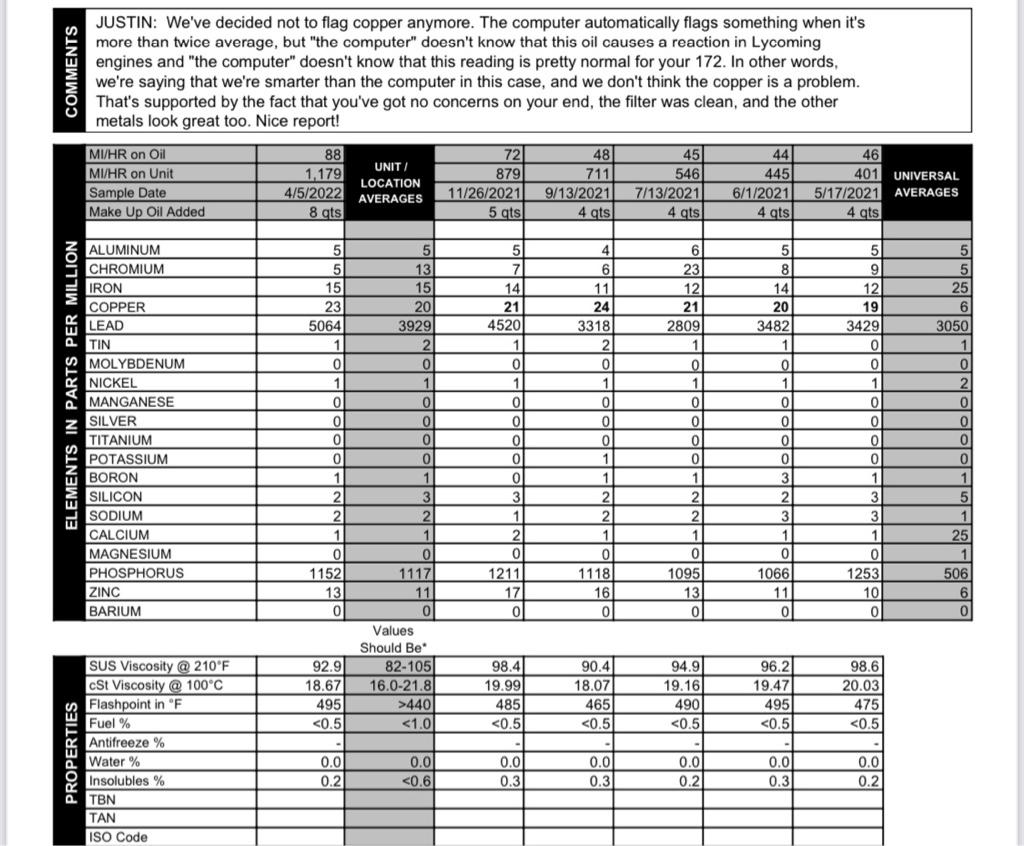Skymac
Pre-takeoff checklist
I figure I’ll be my own guinea pig, but just curious if anyone else has extended their oil change interval on high usage engines. I’m running a 0-320 around 100 hours every 5 weeks, so roughly 20 hours a week.
Sometimes I will catch oil changes at 45 hours, and others at 60 hours just depending on timing. With today’s slightly more modern oil, and spin on filters I’ve been tempted to go a full 100 hours before change and oil analysis. The way I see it is I’m adding 1 quart around every 12 to 14 hours, so that’s around 8 quarts per hundred hours, not to mention the oil doesn’t have much calendar time on it.
I use Aeroshell 15w-50
More of a curiosity than anything to compared Blackstone samples between a 50 and 100 hour interval but with the problem of getting filters and oil, it’s peaked my curiosity. I wouldn’t normally do this on a airplane that’s not running at a high utilization.
Flame suit on!
Sometimes I will catch oil changes at 45 hours, and others at 60 hours just depending on timing. With today’s slightly more modern oil, and spin on filters I’ve been tempted to go a full 100 hours before change and oil analysis. The way I see it is I’m adding 1 quart around every 12 to 14 hours, so that’s around 8 quarts per hundred hours, not to mention the oil doesn’t have much calendar time on it.
I use Aeroshell 15w-50
More of a curiosity than anything to compared Blackstone samples between a 50 and 100 hour interval but with the problem of getting filters and oil, it’s peaked my curiosity. I wouldn’t normally do this on a airplane that’s not running at a high utilization.
Flame suit on!
Last edited:

